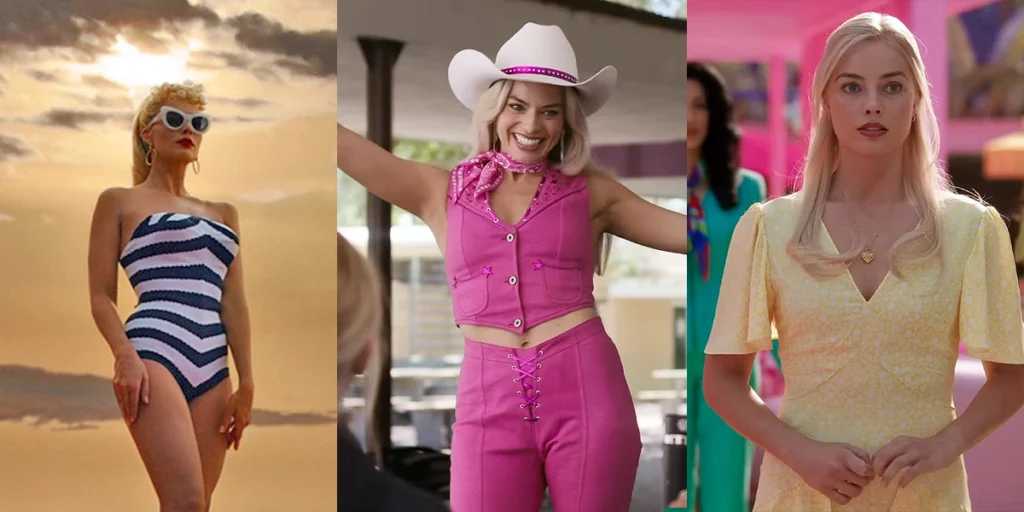Margot Robbie’s Barbie costumes pull from the doll’s real-life looks, while still reflecting where Barbie is in the narrative as they evolve.
Last summer belonged to Barbie, when donning pastels and pinks became a universal rite. Greta Gerwig’s hot-pink piece of satire went on to gross more than $1.4 billion dollars and took home a golden statue at March’s Academy Awards, where the age of Barbie drew to its inevitable end. Margot Robbie’s new, shorter hairstyle feels almost like a signal that she’s moved on from the doll life — the Barbie breakup cut — but Barbie’s poppy style remains a trending topic. Costume designer Jacqueline Durran gave Barbie looks that not only resonated with modern audiences but reflected where she is in the story at that moment: the costumes evolve with the narrative, just as she does.
Barbie’s fashion took us through the decades, beginning with Robbie wearing Barbie’s original black and white striped swimsuit from 1959, sporting the same curly ponytail, red lipstick and blue eyeshadow. The film’s 2001: A Space Odyssey-inspired opening replaces prehistoric primates with little girls playing with baby dolls before becoming awe-struck by a giant version of the original Barbie. Robbie’s first costume was an excellent nod to Mattel’s original doll and made it apparent she was a far cry from the baby dolls the little girls were used to playing with.
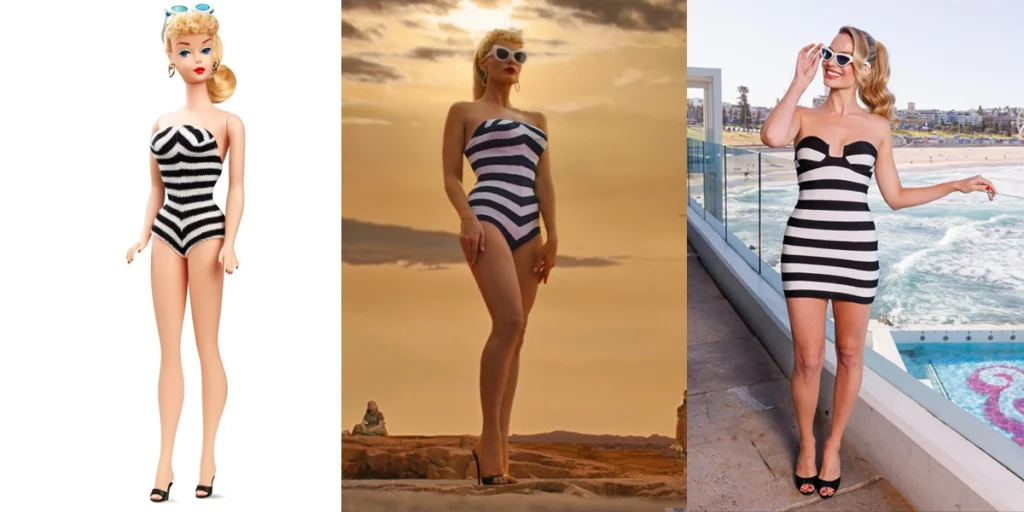
In Barbie’s Blu-ray featurette “Playing Dress Up,” Durran reveals she took inspiration from technicolour films of the 1960s including The Young Girls of Rochefort and The Umbrellas of Cherbourg when curating Barbie’s signature style early in the film. Barbie’s first Barbie Land look is a pink gingham midi dress and daisy jewellery which then changes into a mini when she goes to the beach, accompanied by a floppy hat and plastic seashell necklace. The gingham’s classic pattern and clean silhouette was reminiscent of the style from the late 1950s and early 1960s. Gerwig wrote Barbie with a loose logic. There are no indicators of time in Barbie Land, but Durran’s costuming immediately sends the viewer to the past, stipulating Barbie represents a slightly dated view of feminism and how the brand is perceived, something Mattel is often criticized for and is made evident to Barbie later in the film.
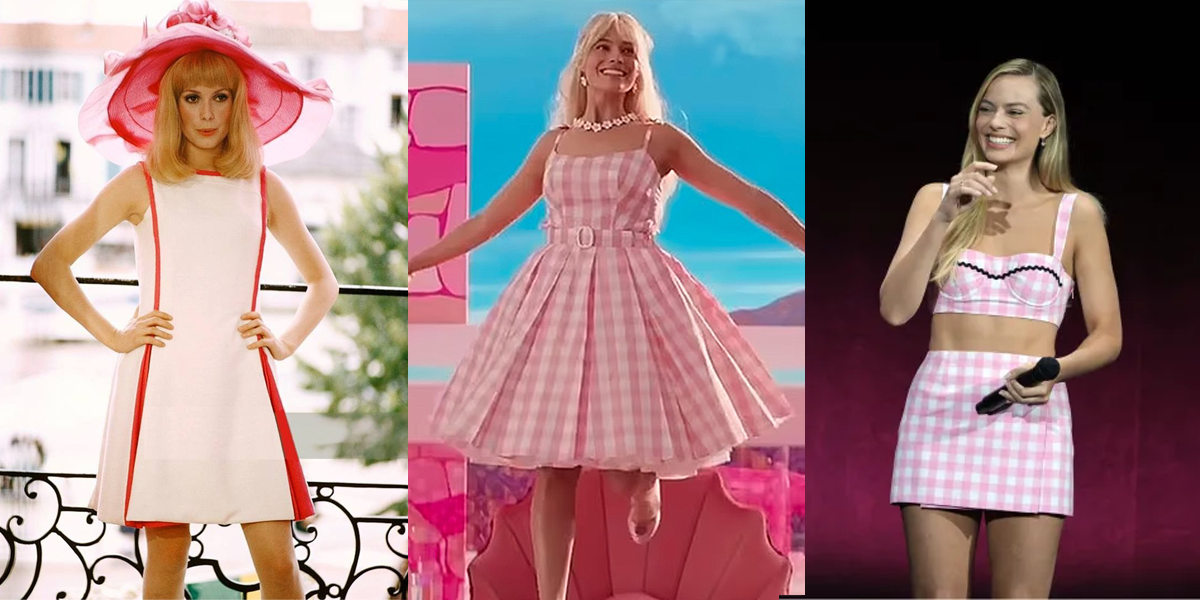
Durran often references vintage dolls including 1994’s Hot Skatin’ Barbie, inspiring the neon roller-skating look when Barbie and Ken first arrive in the real world. Barbie’s childlike smile turns sullen as she rollerblades down Venice Beach, unsure of why bystanders stare and scoff; shame is something she has never felt before. Barbie and Ken’s vibrant leotards make them stand out against the muted tones of the real world. Barbie’s newfound shame makes for a pivotal moment in the film when she rushes to change clothing in hopes of blending in with the masses. For the first time, Barbie isn’t using clothes to express herself.
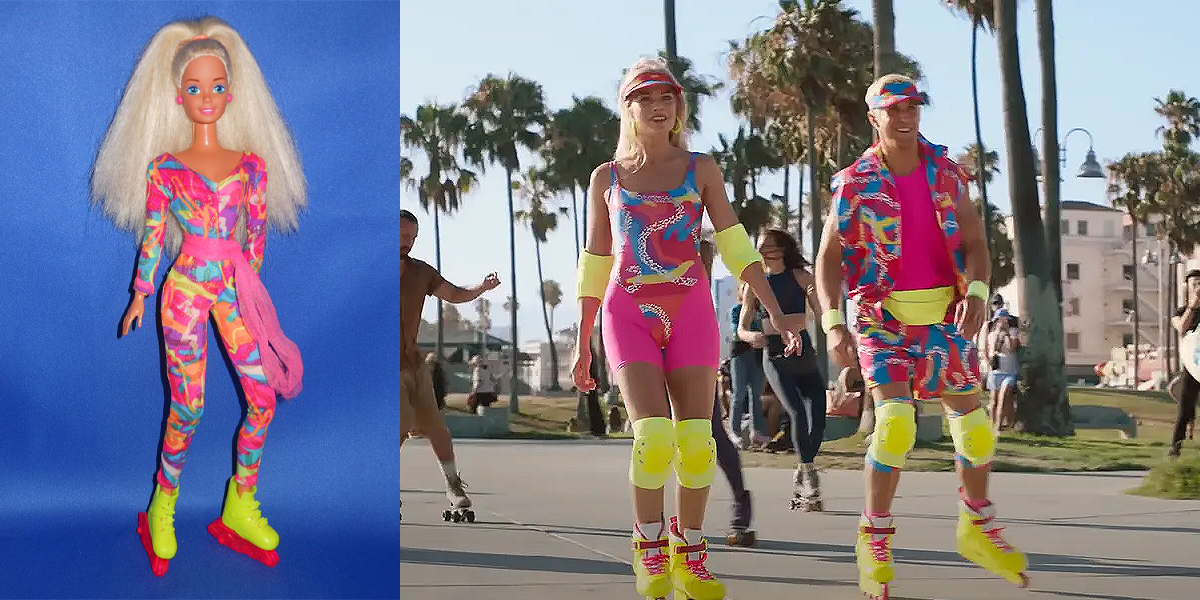
Durran explained to Refinery29 that the Western Barbie look came from wondering what Barbie would wear in the real to make her fit in in America. Her collared vest and hip-hugging flares embrace Western culture and the enduring image of America’s frontier folklore. She also wears denim, a material that doesn’t exist in Barbie Land.
Barbie hits rock bottom when she discovers the Kens have taken over Barbie Land. Her attempt to convince the Barbies to restore their utopia fails and she becomes depressed, irritably removing her maximalist accessories and tossing them into the air. Barbie dons a pastel blue gingham dress and matching hat. Durran reveals she wore two versions of the dress – one a bright blue and the other a faded blue – to signal that she’s beginning to change. Barbie’s hair is similarly symbolic, losing its extreme volume and appearing more realistic and tousled.
Fortunately, America Ferrera’s Gloria instils confidence in Barbie with the feminist monologue we’ve probably all quoted into our bedroom mirrors since July. From this point on, Barbie trades her clean hemlines and flashy accessories for a more contemporary style.
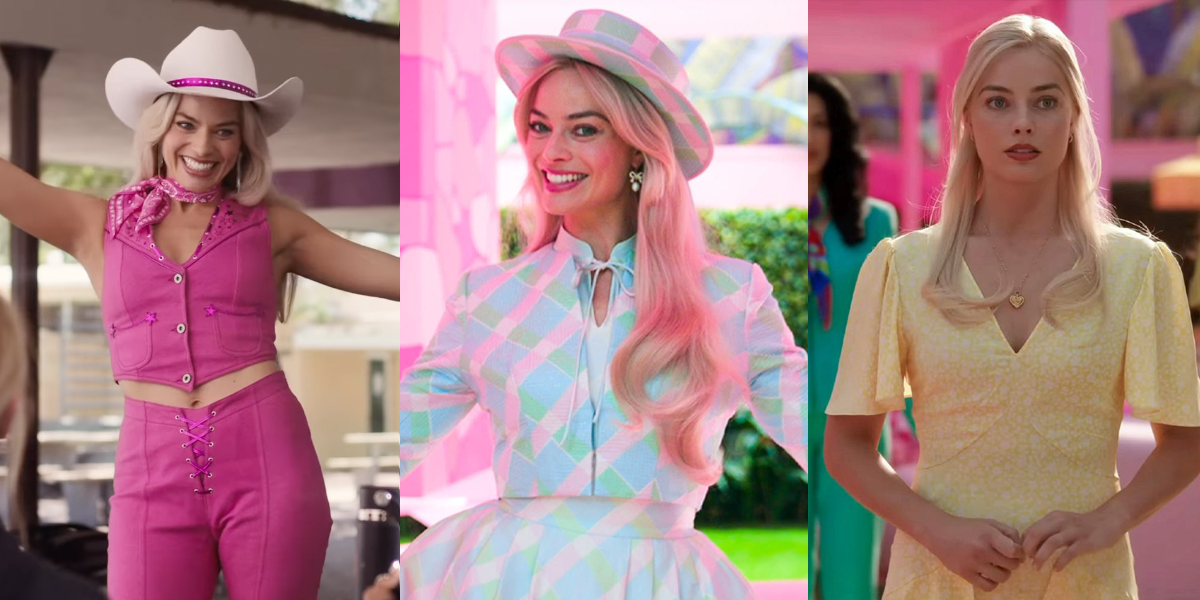
Durran pulled from Chanel’s archives for some of the film’s final looks, including a heart-shaped vintage bag and pink mini dress.
Now craving the complicated human experience, Barbie dons a simple, fluid-cut yellow dress and a single heart necklace by Missoma. Durran’s choice shows Barbie as a human being, rather than a well-defined doll. Barbie ends the film in the real world, sporting a pair of pink Birkenstocks, showing off her flat, human feet.
Barbie honoured the doll’s long history of looks while still evolving with the narrative. Durran’s costuming worn by Robbie made a remarkable dent in both the real world of fashion and film.
Barbie is now available to watch on digital and on demand. Read our list of all movies directed by Greta Gerwig ranked from worst to best and the 5 movies to watch after Barbie!

